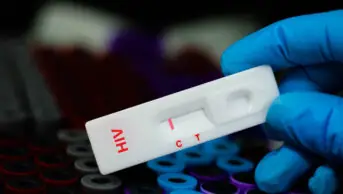
Shutterstock.com
Darzi Fellowships provide clinicians from various clinical backgrounds the chance to develop the skills and knowledge base required to lead change and shape the future of the NHS. During their fellowship, Darzi fellows have an opportunity to manage a change project within an NHS organisation over 12 months, alongside completing postgraduate-level educational training through London Southbank University. It is a year of exploration and offers a unique opportunity to build networks with system leaders and develop personal leadership styles.
I am a specialist mental health pharmacist, based at The Health Innovation Network (HIN) for my Darzi Fellowship. The HIN is South London’s Academic Health Science Network (AHSN), one of the 15 AHSNs across England. The HIN is a membership organisation connecting academics, NHS commissioners and providers, local authorities, patients and industry, in order to accelerate the spread and adoption of evidence-based innovations and best practice. Healthy ageing is one of the clinical priorities for the HIN.
In recent years, the government and NHS England have placed a focus on improving dementia diagnosis rates1. A timely diagnosis enables access to information, advice and support, and access to a pathway of effective treatment and care2. In response to this in 2015 and in recognition of the low diagnosis in residential and nursing homes the HIN worked with three care homes to co-design the Dementia Assessment Referral to GP (DeAR-GP, http://www.dear-gp.org/).
DeAR-GP is a case-finding tool which supports care workers in care homes to identify people who are showing signs of dementia and refer them to their GP for review. DeAR-GP incorporates a set of observations along with the Abbreviated Mental Test-4 scale to be completed by the care worker. Supported by the Alzheimer’s Society, since its launch, there has been national uptake and it is recognised as a ‘low-cost, high-impact intervention’3.
It is estimated that two-thirds of people with dementia live in the community4. Many of these people may be receiving support from district nurses or support staff in older adult housing schemes. Recognising this, I have been working with housing providers and community health teams across four London boroughs to pilot how DeAR-GP can be adapted for these settings.
For this work the HIN worked in partnership with three housing providers (Genesis Housing Association, Royal Borough of Kingston upon Thames, Metropolitan Housing Association) and one community health provider (Central London Community Healthcare NHS Trust). Stakeholder engagement meetings were held in each pilot site and consisted of representatives from housing providers, clinical commissioning group (CCG) commissioners, GP dementia leads and the secondary mental health trusts (memory clinics). The purpose was to agree the communication pathway from the front line staff to the GPs and memory service.
A pre-pilot focus group and training session were conducted with front line staff from each participating organisation. Findings included that staff had experience and awareness of some of the signs and symptoms of dementia. There was considerable variation in training levels. Staff felt that, even though working with dementia was challenging, it was also rewarding. The tools were co-designed with the staff in the focus groups. Minimal adaptations of the original DeAR-GP tool were required for the housing partners. The community health team requested to include the Six-Item Cognitive Impairment Test (6-CIT) in place of the Abbreviated Mental Test-4 (AMT-4). Patient Health Questionnaire (PHQ-9), a depression scale, was added, acknowledging the link between depression and dementia and the incidence of depression in older adults. A user guide was also developed to ensure ease of understanding of the tools.
The pilots took place over 4–6 weeks in the housing schemes and a 10-week period with the community health team. There were 12 DeAR-GP referrals sent to GPs during the pilots. Feedback from staff during the post-pilot focus groups was positive. One housing staff member explained that the tool helped her “gain a better understanding of what to look for” in terms of the signs and symptoms of dementia. Staff considered the tool to be “quick and easy to use”. One housing staff member stated that “having the tool to refer to was useful not only when making observations but also when completing risk assessments and periodic welfare checks”. At the end of the pilot period staff were enthused and keen to continue this work.
This work is an example of effective partnership working across the health and social system from local authorities, housing providers, CCG commissioners, secondary mental health trusts (i.e. memory services), community health provider and the voluntary sector. Engaging key stakeholder and front line staff is vital to ensuring an effective communication pathway. A full report will be published in August 2017. For more information contact hin.southlondon@nhs.net. For more information about my Darzi year please contact simran.janjua@nhs.net.
References
1. Department of Health. Prime Minister’s challenge on Dementia: Delivering major improvements in dementia care and research by 2015. London; 2012.
2. World Alzheimer Report. Alzheimer’s Disease International. London; 2011. Available at: https://www.alz.co.uk/research/WorldAlzheimerReport2011.pdf (accessed 17 July 2017).
3. NHS England. New care models [Internet]. 2016. Available at: https://www.england.nhs.uk/wp-content/uploads/2016/09/ehch-framework-v2.pdf (accessed 17 July 2017).
4. Alzheimer’s Society. Dementia-friendly housing charter. London; 2017. Available at: https://www.alzheimers.org.uk/info/20079/dementia_friendly_communities/1021/dementia-friendly_housing_charter. (accessed 17 July 2017).


